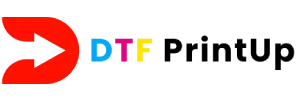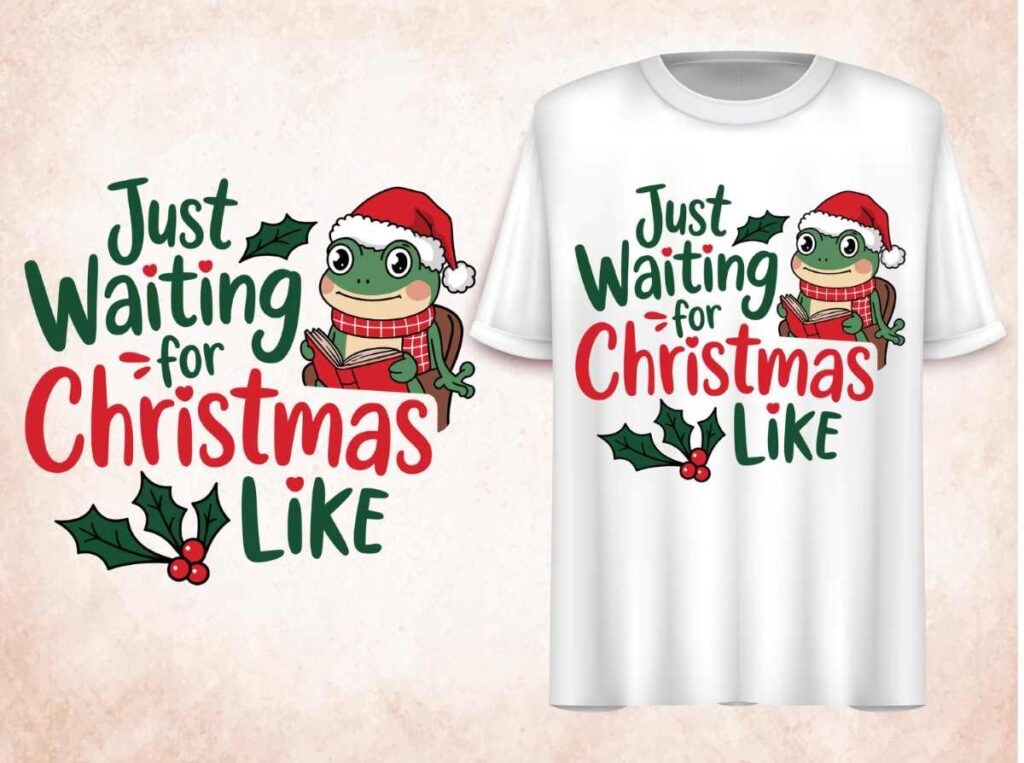DTF printing, or Direct to Film printing, has revolutionized the world of custom apparel by providing a versatile and efficient method for transferring intricate designs onto fabric. This innovative technique allows both beginners and experienced designers to easily create vibrant, high-quality prints. In our DTF printing guide, we will delve into the myriad benefits of this technology, including its cost-effectiveness and durability compared to traditional printing methods. As more DIY enthusiasts embrace DTF printing for beginners, the demand for this powerful technique continues to rise. Join us as we explore everything you need to know about DTF printing, from its basics to advanced applications.
Also known as direct-to-film printing, this modern method has gained significant traction in the custom apparel printing arena, capturing the interest of many who seek precision and durability in their designs. By allowing users to print detailed graphics onto special films before transferring them to various materials, this technique is setting new standards in textile printing. Designers and entrepreneurs alike are discovering the advantages of utilizing direct-to-film technology for producing high-quality apparel, with its, vibrancy and long-lasting results making it a go-to choice. As this trend evolves, understanding the processes and benefits associated with direct-to-film printing can empower newcomers to create exceptional products in a competitive marketplace. Let’s take a closer look at how this method functions and the value it brings to the vibrant world of custom apparel.
The Basics of DTF Printing: A Beginner’s Overview
Direct to Film (DTF) printing is an innovative approach that simplifies the process of custom apparel printing. It is characterized by its unique mechanism where designs are printed onto a specifically prepared PET film. This film acts as a medium to ensure high-quality prints that can easily be transferred onto a variety of fabrics. Ideal for beginners, DTF printing negates some of the complications associated with traditional techniques, making it an accessible option for DIY creatives and small business owners alike.
For individuals new to the world of custom apparel production, understanding the foundational steps of DTF printing is essential. The process begins with creating a digital design using graphic design software. Once the design is ready, it is printed onto the PET film using specialized DTF inks that guarantee vibrant colors and intricate details. These printed films, reinforced through the application of adhesive powder, are then transferred to the fabric under heat pressure. This seamless workflow positions DTF printing as a versatile and efficient method for producing stunning textile designs.
DTF Printing Benefits: Why Choose This Method?
DTF printing offers a plethora of advantages that make it a standout choice in the custom printing landscape. One of the most compelling benefits is its versatility; this technique can be applied to an extensive range of materials beyond traditional cotton and polyester, including popular fabrics like blends and specialty items. This flexibility opens up numerous avenues for creative expression, whether for personal projects or commercial endeavors.
In addition to its versatility, DTF printing is known for producing high-quality outputs. The result is vibrant, long-lasting prints that maintain their integrity through repeated washing and wearing. When executed properly, DTF prints are resistant to cracking and fading, ensuring that designs retain their appeal over time. As a result, both professional and hobbyist printers can achieve satisfaction with the durability and aesthetic of their printed creations.
Common Challenges in DTF Printing and How to Overcome Them
Despite its many advantages, beginners in DTF printing may encounter challenges that can initially feel daunting. One significant hurdle is the initial investment required for DTF printing equipment, which can include a printer, heat press, and specialized supplies. This upfront cost can deter potential users; however, understanding that this investment often pays off in the long run, especially for small to medium production runs, can help new printers to see the value.
Another challenge is the learning curve associated with mastering the DTF printing process. New users must familiarize themselves with their equipment settings, film materials, and adhesive powders to achieve optimal results. To combat this, experimenting with settings and seeking guidance from online communities can greatly enhance the learning experience. Tutorials, forums, and user experiences can provide valuable insights that ease the transition into successful DTF printing.
Current Trends in DTF Printing: What to Watch For
As of 2023, DTF printing continues to evolve with new trends shaping its future. One notable trend is the rising popularity of DTF among small businesses and independent creators. This method appeals to entrepreneurs looking to customize apparel efficiently and effectively, giving them an edge in the burgeoning market for unique clothing designs. The accessibility of DTF technology has empowered a new generation of creators to bring their artistic visions to life.
Moreover, technological advancements play a critical role in the DTF printing narrative. Manufacturers are continually innovating to produce more compact and user-friendly printers, making it easier for beginners to enter the market. These technological improvements not only enhance usability but also reduce costs, allowing a broader audience to experience the benefits of DTF printing firsthand.
Eco-Friendly Practices in DTF Printing: Towards Sustainability
Sustainability has become an increasingly important consideration in the DTF printing industry. As consumers become more environmentally conscious, there is a growing demand for eco-friendly materials and processes within the printing landscape. Manufacturers are responding by developing sustainable inks and films that minimize environmental impact, enabling users to produce custom apparel with a clear conscience.
Additionally, the industry is witnessing a shift toward practices that focus on reducing waste and promoting longevity of products. DTF printing, with its ability to create lasting prints, plays a connected role in this sustainability dialogue. As more printers adopt these eco-friendly practices, the DTF printing field is transitioning into a responsible sector that resonates with consumers who seek sustainable options.
Best Practices for Beginners in DTF Printing: Mastering the Process
For those just embarking on their DTF printing journey, implementing best practices can streamline the learning process and lead to better results. A key recommendation is to begin with a small investment in equipment and gradually scale up. Starting with a basic printer and heat press allows beginners to experiment with diverse designs without significant financial pressure.
Regular practice is essential in mastering DTF printing techniques. Beginners should take time to experiment with various settings, substrates, and design styles to discover what works best. Engaging with online communities can also provide supplementary knowledge, including tips, troubleshooting advice, and shared experiences. By leveraging the collective wisdom of experienced printers, newcomers can quickly gain confidence in their DTF printing skills.
Frequently Asked Questions
What is DTF printing and how does it work?
DTF printing, or Direct to Film printing, is a technique where designs are printed onto a special PET film and then heat transferred to fabric. The process involves creating a design digitally, printing it on the film using eco-solvent or water-based inks, applying an adhesive powder, and finally using a heat press to transfer the design to the garment.
What are the main benefits of using DTF printing for custom apparel?
The key benefits of DTF printing include its versatility across different fabrics, high-quality output with vibrant colors and details, cost-effectiveness for small runs, and durability with excellent washability. These advantages make it increasingly popular for custom apparel printing.
Can beginners start with DTF printing easily?
Yes, beginners can start with DTF printing, but there is a learning curve. Investing in affordable equipment and starting with small projects helps. Researching materials and practicing techniques are crucial for mastering the process.
What materials do I need for DTF printing?
For DTF printing, you’ll need a DTF printer, PET film, DTF inks, adhesive powder, and a heat press. It’s important to choose high-quality materials to ensure the best results in your custom apparel projects.
Are there any environmental concerns associated with DTF printing?
While DTF printing is becoming more eco-friendly, some inks and materials may still raise environmental concerns. It’s essential to research suppliers who prioritize sustainable practices to mitigate the impact of DTF printing.
What trends are currently shaping the DTF printing industry?
Current trends in DTF printing include its rising popularity among small businesses and hobbyists, advancements in technology making printers more accessible, and a focus on sustainable inks and processes to meet consumer demands for environmentally friendly options.
| Aspect | Details |
|---|---|
| What is DTF Printing? | A printing technique that transfers designs from a special PET film to fabric using heat. |
| Key Benefits | Versatile application on various fabrics; high-quality, vivid prints; cost-effective for small runs; durable results. |
| Challenges | High initial investment; learning curve for new users; environmental concerns with some materials. |
| Current Trends | Rising popularity among businesses and hobbyists; technological advances in printer accessibility; focus on sustainability. |
| Tips for Beginners | Start with affordable equipment; research materials; practice techniques; join online communities for support. |
Summary
DTF printing is a transformative technology that empowers individuals and businesses to create unique custom apparel with ease. This innovative method not only offers versatility across various fabric types but also delivers strikingly vivid prints that capture intricate details. As it stands at the intersection of cost-effectiveness and durability, this printing technique is increasingly becoming the go-to choice for both seasoned professionals and newcomers to the industry. Despite some initial challenges such as equipment costs and learning curves, the potential for creativity and personalization in projects is immense. By staying updated with the latest trends and best practices, users can maximize their DTF printing experience, making it a valuable investment in their creative and entrepreneurial endeavors.



